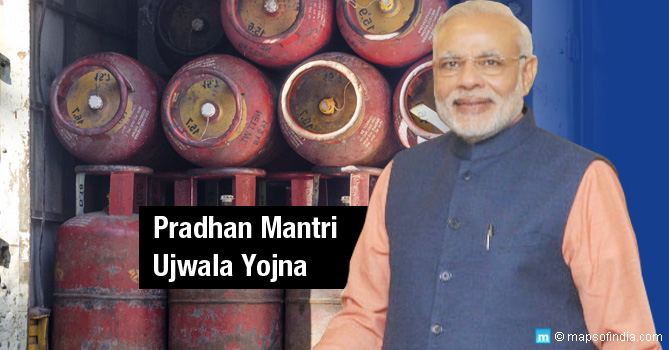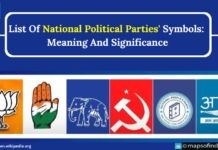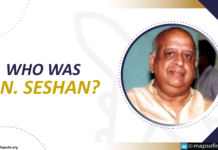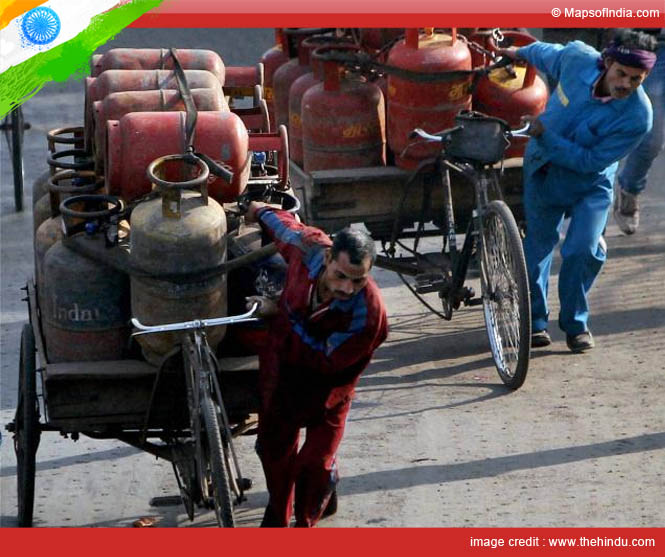On 1 May 2016, during his visit to Ballia district of Uttar Pradesh, Prime Minister Narendra Modi launched the ‘Pradhan Mantri Ujjwala Yojana’. Here’s a detailed look at the scheme:
What is Pradhan Mantri Ujjwala Yojana all about?
Pradhan Mantri Ujjwala Yojana is basically an NDA government scheme created with the aim of providing five crore free cooking (LPG) connections to all families below the poverty line, over the next three years i.e. till 2019. Prime Minister Narendra Modi was quoted as saying that the reason behind choosing Ballia to launch the scheme was the low number of LPG connections available in the city. Serving as a boon for both men and women, the Pradhan Mantri Ujjwala Yojana would include offering subsidy in the Jan Dhan accounts of the family’s woman head to curb any chances of corruption. LPG connections would also aid in improving the health of women who need to cook food on firewood and hence tend to inhale thick, unhealthy smoke.
The bane of smoke
During his budget speech in the parliament, Union Finance Minister Arun Jaitley had said that women across the country had been facing the “curse” of smoke every time they spent in the kitchen. He also likened open fires in kitchen to burning 400 cigarettes in 60 minutes, citing experts to substantiate his statements and thus opining that it was time to tackle the issue head-on. The Finance Minister also said that in the budget for the upcoming fiscal Rs. 2,000 crore had been set apart for meeting the starting expenses of the programme.
How does Pradhan Mantri Ujjwala Yojana work?
The Pradhan Mantri Ujjwala Yojana gives a monetary support of Rs. 1,600 for each LPG connection to BPL households. Identification of all BPL families eligible for the scheme would be made after detailed discussions with the state governments and the Union Territories via the Socio-Economic Caste Census of 2011.
What is the role of ‘Give It Up’ initiative?
With a total cost of Rs. 8,000 crore, the Pradhan Mantri Ujjwala Yojana will partially be funded using the money that has been saved from 1.13 crore cooking gas users who voluntarily gave up their subsidies via PM Modi’s ‘Give It Up’ initiative. A whopping Rs. 5,000 crore subsidy saved through this campaign will now be used to provide LPG connections to families which lack even the basic amenities of life.
What are the benefits of Pradhan Mantri Ujjwala Yojana?
Indian government claims that the drive to provide LPG connections to BPL families will ensure a global coverage of cooking gas in different parts of India. Additionally, it will also empower women, improve their basic health condition, reduce drudgery and the overall time that is otherwise spent on cooking food. Even the rural youth, engaged in the supply chain of cooking gas, would be able to spot better employment opportunities via the Pradhan Mantri Ujjwala Yojana.
It is expected that the Pradhan Mantri Ujjwala Yojana will benefit around 1.5 crore households living below the poverty line. The programme is also expected to cover five crore such households in all. Almost all these families are based in the rural hinterlands of India. Finance Minister Arun Jaitley expressed confidence that once accomplished, this scheme will ensure that every family in India has a cooking gas. Dharmendra Pradhan, the Union Oil Minister, has said that this programme is meant to give greater power to women in India and safeguard their health as well. It is also expected that as a result of using these cylinders, women will have to spend less time in the kitchen and they will be able to use the time saved in productive pursuits.
Why is this scheme special?
The programme is praiseworthy on several counts. First of all, this is perhaps the first time that the Union Ministry of Petroleum and Natural Gas has started a welfare scheme for crores of women from the poorest families across the country. India is basically a third world country and as a result of that their access to cooking gas such as LPG is limited. In case of the poorest of the poor – whom the programme looks to benefit – this access is almost absent. Till date, the government has only provided LPG cylinders in urban and semi-urban areas and the beneficiaries have primarily been either well-to-do families or the middle class.
The situation of the poor is further compounded by the fact that they have to cook using fossil fuels, which can lead to health problems among users, most of whom in these cases are women, who in any case are frail due to malnutrition, excessive working and the pressure to bear multiple children and keep the family going.
The World Health Organization (WHO) has stated that almost five lakh people die in India owing to usage of unclean cooking fuels. In most cases, these deaths are due to non-communicable diseases such as heart disease, chronic obstructive pulmonary disease, stroke and lung cancer. Young children can also suffer from severe respiratory ailments owing to indoor pollution.
Read Also:
‘Stand up India’ Scheme by PM Modi : Highlights, Objectives, Benefits, Process
PM’s Employment Generation Programme (PMEGP) : Details, Benefits, Objective, Eligibilit
Setu Bharatam Project
Pradhan Mantri Ujjwala Yojana
Atal Pension Yojana
MUDRA Bank Yojana
Sukanya Samriddhi Account
Pradhan Mantri Jeevan Jyoti Bima Yojana (PMJJBY)
Pradhan Mantri Suraksha Bima Yojana (PMSBY)
Pradhan Mantri Kaushal Vikas Yojana
Pradhan Mantri Krishi Sinchai Yojana
Pradhan Mantri Surakshit Matritva Abhiyan (PMSMA)
Pradhan Mantri Awas Yojana (PMAY)
One Rank One Pension Scheme
Seventh Pay Commission
Garib Kalyan Yojana
All Information about Digital India Programme
DigiLocker
eBasta – Features and Benefit for students
Atal Mission for Rejuvenation and Urban Transformation
Mahatma Gandhi National Rural Employment Guarantee Act (MGNREGA)
Beti Bachao Beti Padhao Scheme
Pahal Scheme
Jan Dhan Yojana
Skill India Programme
Swachh Bharat Abhiyan: Making India Clean & More
Pradhan Mantri Fasal Bima Yojana (PMFBY)





